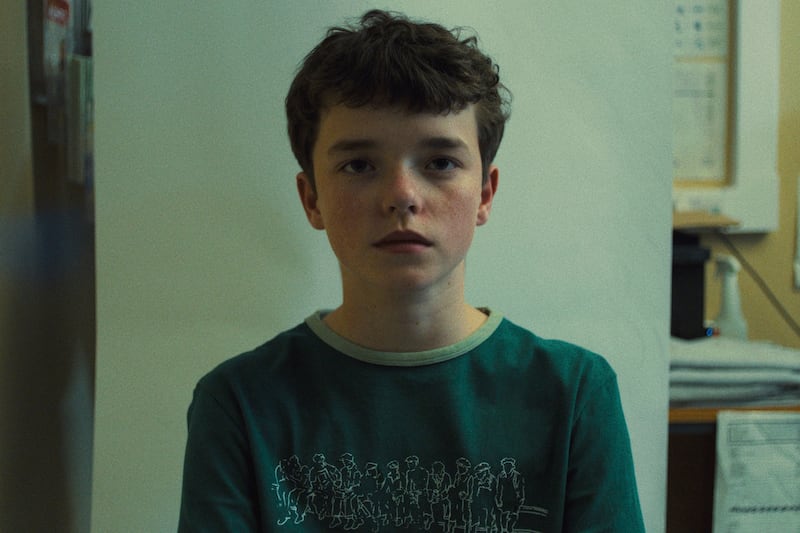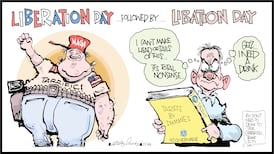In the late 1980s - while pregnant with me, working a badly paid job, dealing with an abusive, mentally ill mother, a three-year-old son and living with my father (he was a chronic alcoholic who spent money on drink as quickly as she could earn it) - my mother had what was then called a “nervous breakdown”. It is a parlance that is rarely used these days, having thankfully gone out of fashion through the history of psychiatry along with hysteria, Dr Egas Moniz’s prefrontal lobotomy (a procedure that won him the Nobel Prize in 1949) and the categorisation of homosexuality as a mental illness.
“Nervous breakdown” was most often applied to women, encompassing a confluence of factors that might reasonably have led a person to end up overwhelmed. Yet it was not in itself a clear, bounded concept. A bit like burnout, which is not officially a pathological condition, it left room for interpretation. A term applied to women who “couldn’t cope”.
While burnout is generally referenced in relation to work, productivity and our relationship with both, the lines between work and home life blurred during the pandemic. Those redrawn boundaries remain in many cases. It has become a catch-all term for the rising sense of dissonance and disengagement that sees people increasingly reconsidering their relationships with career and the future under conditions of economic strain and political polarisation.
There is a growing realisation that job-hopping and insecurity are inevitable and as Gen Z has realised through “quiet quitting” – essentially fulfilling a job description and absolutely nothing more – there is generally no pot of gold at the end of the rainbow.
Research from 2022 reported by Gallup and HR tech company Workhuman found that Irish employees are ahead of other European nations when it comes to burnout rates, with the gap between women and men more than doubling since 2019. Mental Health UK’s 2024 Burnout Report found that 91 per cent of adults surveyed reported experiencing high or extreme levels of stress in the past year. Again women – 93 per cent – reported this at higher rates than men. Women don’t have nervous breakdowns these days but we do appear to feel burnt out in astonishing numbers.
While things have changed since my mother’s experience, Irish womanhood was for so long conceived in part as a capacity to carry unlimited burdens and accept hardship. An ironically macho concept of womanhood. Under such conditions, falling apart seems a rational response to an irrationally stressful situation. So too, in many cases, is burnout, though the list of symptoms by which we might recognise it is varied, encompassing both the physical and psychological – headaches, intestinal issues, fatigue, frequent illness, shortening attention span, irritability and sleep changes all feature with more nebulous concepts such as feeling alone or trapped, having a negative outlook, and self-doubt.
[ Physical signs: Mental illness is not just emotionalOpens in new window ]
These symptoms tend to escalate without a change of circumstance, where that is possible. Of course, it isn’t always. In this sense, discussion of burnout tends to be focus on it as a particularly middle-class malaise – a conversation largely conducted around the juggling of office work or higher-level education and family responsibilities. The term isn’t particularly useful to single mothers in minimum-wage jobs or Deliveroo riders working several shifts in succession and trying to support families in a country where the price of consumer goods and services was 46 per cent above the EU average in 2022. They doubtless experience burnout too but there seems to be less function in talking about it. No one is listening.
While we feel very far from the women of the 1980s and enjoy vastly more opportunity and freedom than they did, we still carry the legacy of their burden
A key (no less middle-class) feature of our time is a tendency to lend our choices validity through pathologisation. This is especially tempting for women, who must often electively push against a lifetime of socialisation to feel entitled to prioritise their own urgent needs over even the less imminent needs of people around them. We can be guilty of hoping that others will intuit our stress and give us permission to slow down rather than feeling at liberty to do it for ourselves. Burnout is a useful label for communicating when we are approaching our limit but most of us have some complicity in it. We burn what we have in pursuit of a particular self-image, a particular conception of success, or to keep others warm. Often both.
[ The great resignation: a lifestyle choice or an effect of burnout?Opens in new window ]
While burnout is generally self-diagnosed and may lend a public frame of reference and sense of validity to finding ourselves overwhelmed by our circumstances, its framing in popular culture may not be all that helpful. It’s difficult to ignore the idea that burnout may simply be a modern iteration of old-fashioned unhappiness – a combination of having greater demands upon us than we have resources to meet them. And all this under conditions where we collectively pretend that the disparate roles women play – those expected of us and those we choose – offer no implosive friction or inherent dissonance. The cliche that says that women should mother like they don’t work and work like they don’t have children comes to mind.
My mother’s Ireland qualified womanhood in part as forbearance. Many bore stress and misery beyond anything compatible with human flourishing. They leave my generation questioning the extent to which that philosophy of volitional suffering (there was, of course, plenty of non-volitional suffering too – I’m referring to the sense in which women did not feel entitled to palliation) has leaked into our own self-image. While we feel very far from the women of the 1980s and enjoy vastly more opportunity and freedom than they did, we still carry the legacy of their burden. We resent this impulse to fulfil the expectation we inherited from our mothers – that womanhood is inherently painful – even as we make choices that contribute to it.
If Irish mothers taught us anything, it is surely that there is no martyrdom in suffering.















